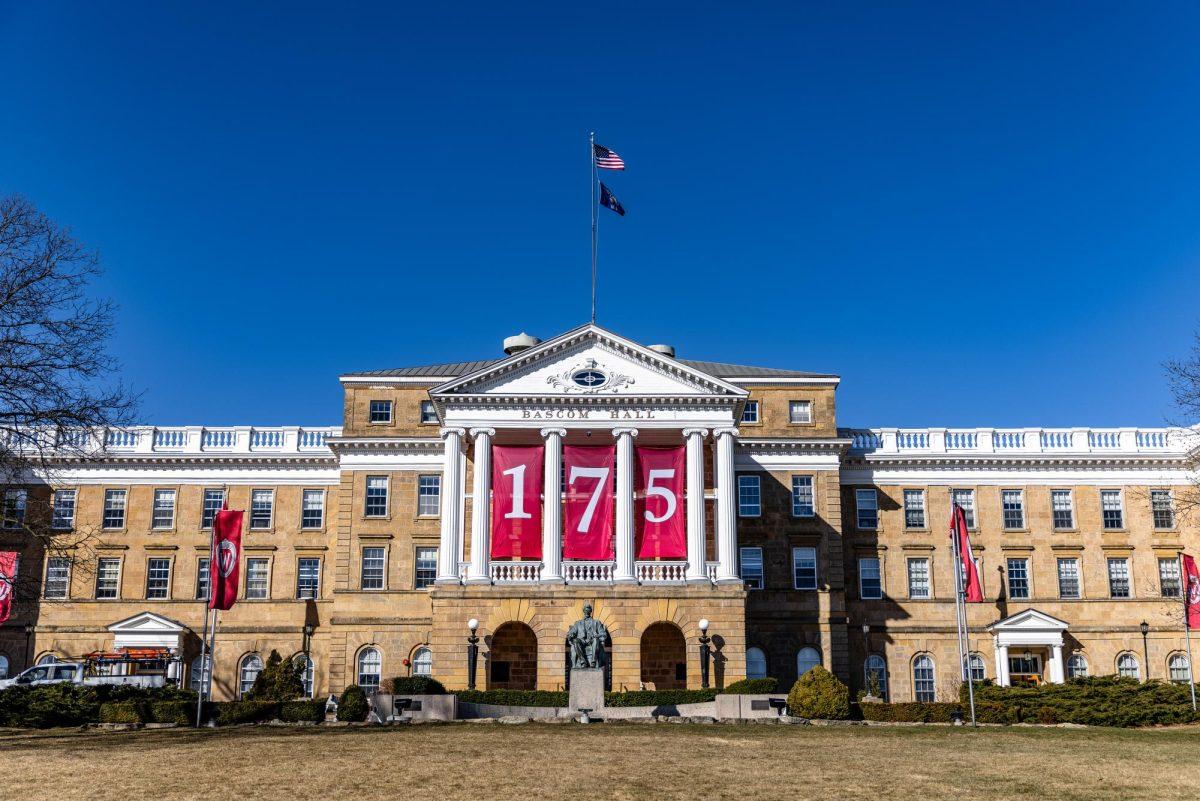Of the nearly 8,000 enrolled members in the Ho-Chunk Nation, there are currently less than 40 who can speak the Ho-Chunk language (also anglicized as Hoocąk). This is due to past removals and relocations of Indigenous Americans, Hoocąk Waaziija Haci Language Division Program Manager Adrienne Thunder said.
According to The National Native American Boarding School Healing Coalition, between 1869 and the 1960s, the American government sent Indigenous children to more than 350 Indian boarding schools. Students at these schools were forced to assimilate to a Westernized way of life. Several decades later, the repercussions of these institutions are evident through the dwindling number of Hoocąk speakers, according to NNABSHC.
Organizations like the Hoocąk Waazija Haci Language Division are working to change that. According to the division’s website, the group offers a range of programs including an online Hoocąk Academy, a Hoocąk language apprenticeship program and classes for local high schools. But these programs have a limited reach.
“I would say most families probably don’t have direct access to someone who can speak the language very well,” Thunder said. “And so even with our instructors, the ones that we have right now, it’s hard to reach everyone.”
Chancellor Mnookin talks housing, mental health, sustainability with ASM
There are only about a dozen instructors for the 3,500 Hoocąk tribal members in Wisconsin, which makes covering the language and cultural education difficult. Additionally, not everyone can take the classes when they are offered, which compounds the challenge of preserving the Hoocąk language, Thunder said.
In response, the division has partnered with The Language Conservancy, a non-profit organization dedicated to saving endangered Indigenous languages, to expand the division’s virtual Hoocąk dictionary, Thunder said. These forms include a public website and app.
Also in development is an E-learning app for individuals to learn and speak Hoocąk. The plan is for the beta version of the app to be released this fall, with the final product set to release sometime this winter, Thunder said.
Thunder said the purpose of the app is to provide a base for individuals to start with Hoocąk. This could generate more interest and give people some information to work with before needing to work with an instructor.
“We’re hoping this gives people something to work with, and to be able to help them learn to the point where if they’re ready for further learning, then we have instructors who will be able to pick up from there or to be able to enhance their own instruction with the use of the app,” Thunder said.
While there are native speakers that can convey this immersive oral experience, Director of the University of Wisconsin American Indian and Indigenous Studies program Denise Wiyaka said that to teach a course on campus, instructors usually need a master’s degree.
“Most of the native speakers don’t have college degrees,” Wiyaka said. “And so we sometimes will pair them with somebody who does, we’ve done that in the past — paired them with a person who does have a PhD or Master’s [degree] and they’ll co-teach the course then, but it’s hard to find people with a Master’s who can teach.”
Dane County invests $1.5 million in overnight men’s shelter
UW’s AIIS program offers five Indigenous languages including Hoocąk as well as a certificate in which students can take classes about the literature, culture and folklore of American Indian Groups. Wiyak said that though the majority of students in these classes are Native American students, the number of non-Native students interested in learning Indigenous languages is increasing.
For these students, Wiyaka said the value for apps like the one the Hoocąk Waazija Haci Language Division is developing and believes they align with the evolution of teaching.
“I think it’s a tool for learning,” Wiyaka said. “So I think having an app is a good idea. And I think a lot of tribes are going that route. Because you know, everybody has a phone with apps on it.”
Wiyaka also said it is important to preserve native languages in order to preserve culture that has been passed down. Through events such as the Annual Evening of American Indian Storytelling, the AIIS program highlights the importance of having native speakers speak to students in their native tongues. During the event, elders from tribes all over the world are invited to narrate and act out stories in their native languages while being translated into English. By hearing and seeing stories acted and spoken out in their original form, listeners are able to gain a deeper understanding and appreciation for the preservation of Indigenous languages, Wiyaka said.
According to Thunder, the biggest difference between Hoocąk and English is the descriptiveness of the languages. Compared to English, Hoocąk is much more dimensional and offers a more immersive experience due to what are known as positionals. Positionals provide insights into the orientation of actions and are added to the end of a sentence to inform the reader of the position of the subject.
The work done by the Hoocąk Waazija Haci Language Division Program as well as the UW AIIS program are steps toward a revitalization of the Hoocąk language around Wisconsin. For Thunder, this means keeping the Hoocąk’s relationships and connections alive through spoken word.
“All of that history — all of those relationships, all of those events, everything is encapsulated in our language,” Thunder said. “And so I just think it’s important that we try to keep that going as long as possible to continue to tell those stories.”



















